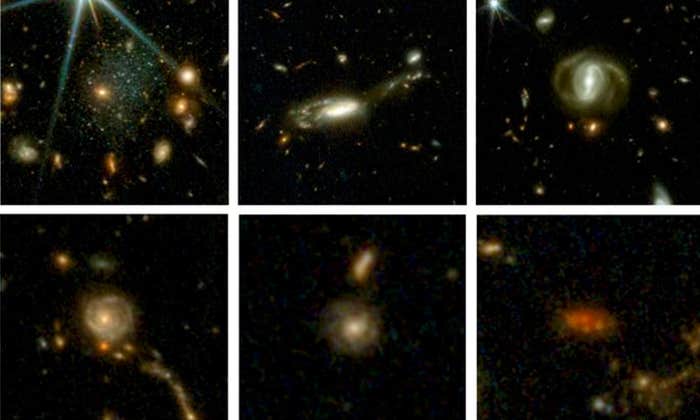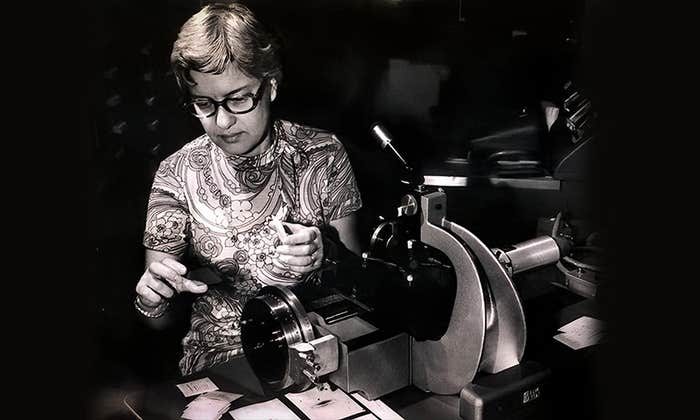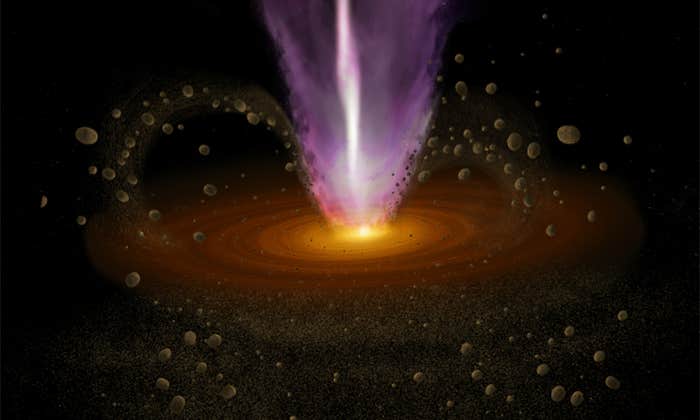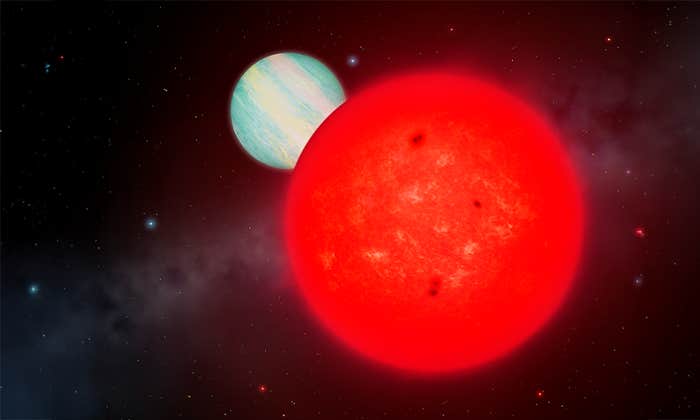It doesn’t feel right to see a toddler walking down the street by themselves. Toddlers don’t just go rogue, and if they do they are quickly chased down by a parent or grandparent or teacher and brought back where they belong. Most planets are like toddlers: They follow a well-behaved orbit around a star. It could be a yellow star, or a red one, a young or old star, or even a system with more than one star. But unlike toddlers, we sometimes find planets going rogue, oddly unbound by the gravity of any star. As you can see in this video illustration from one of us, these “free-floating” planets move among the stars instead of orbiting around one.
Exoplanets—planets orbiting other stars—are a challenge to find. The vast majority of the current sample of exoplanets was discovered by measuring the indirect effect of a planet on its host star’s brightness or motion. But rogue planets don’t have a host star. The odds of a rogue world entering our solar system—like interstellar objects ‘Oumuamua and Borisov—are basically zero, so anyone curious about these interstellar wanderers can’t count on seeing one up close. And of course, we really don’t want one careening nearby because, if it did, it could destabilize the orbits of the planets.
The most direct way to detect free-floating planets is simply to take a picture. So we—three astrophysicists, along with nine other colleagues—set our sights on Upper Scorpius, a nearby group of baby stars in the constellation (you guessed it…) Scorpius. In our new paper, published online in Nature Astronomy, we present the discovery of about 100 free-floating planets there, an unprecedented bounty of rogue planets, roughly doubling the current sample. There are no stars to drown out the planets’ light, but also no stars to heat up the planets and make them shine brightly. So, the best solution is to catch planets young, before they’ve had time to cool off and lose the heat from their formation. During a short window of time, they remain bright enough to detect. That means searching in places where planets are young: in star-forming regions, the birthplaces of stars and planets.
The Upper Scorpius region is so close to our sun that it looks really big, spanning about 170 square degrees—that’s equivalent to an area on the sky with 850 full-moons inside! Getting a good picture (pun intended) of this region was a titanic effort. As part of the Cosmic-DANCE project, an effort to understand where and how stars form, we compiled more than 80,000 wide-field images of the region taken over the past 20 years with a multitude of different telescopes (adding up to more than 100 terabytes of hard-disk space).
We analyzed the brightness and colors of more than 10 million sources of light in these images. Given how huge the region is, we used the motions of light sources to separate the fraction of stars that belong to Upper Scorpius from those in the background, farther away in our galaxy (or in other galaxies). The exact number of free-floating planets in our sample is hard to pin down because it depends on exactly how old the star-forming region (and, by extension, each rogue planet) is.
This is because we can only measure the brightness of each free-floating planet, not its actual mass or size. The older the planet, the longer it has been cooling off to reach its current brightness, and so the brighter (and more massive) it was when it formed. Objects more massive than about 13 times Jupiter’s mass are brown dwarfs; they are similar to gas giant planets in many ways (including their sizes) but generate heat internally, by nuclear fusion of deuterium. With the brown-dwarf cutoff in mind, the brightest objects in our sample are likely above 13 Jupiter masses, if Upper Scorpius is on the older side, or below 13 Jupiter masses if the region is on the younger side.
With our sample of free-floating planets, we can for the first time address the question of their origins. Did these objects form as tiny stars? Decades of study have found that stars generally form according to a pattern in their masses, not-so-poetically called the initial mass function. We tested a variety of initial mass functions and found that none could explain the abundance of free-floating planets in Upper Scorpius. Some other mechanism must have produced a large fraction of the rogue planets we found.
The most likely explanation is that many rogue planets formed around other stars in Upper Scorpius but were later ejected into interstellar space. We know that dynamical instabilities in systems of giant planets are basically universal. Computer simulations show that each instability leads to gravitational scattering of planets off of each other. The most likely outcome (illustrated in the video below) is that one or more planets are ejected from the system entirely, cursed to spend the rest of their lives as rogues.
Our sample only includes the monsters of the bunch. We are only able to detect planets that are at least four times more massive than Jupiter (which is itself 300 times more massive than Earth). There is almost certainly a pile of smaller rogue planets that we can’t yet detect. Statistics from the sample of exoplanets suggests that for every four Jupiter-mass gas behemoths, there are 10 or more Neptune-sized planets, and at least as many Earth-sized planets. There may be thousands of free-floating Earth-mass planets in Upper Scorpius alone. Extrapolating to the galaxy as a whole, this implies a vast population of rogue rocky planets.
The main challenge for life on a rogue world is keeping warm. A rogue planet needs a thermal blanket to preserve its previous internal heat, especially if life requires liquid water. An atmosphere of ten to a hundred bars of molecular hydrogen or a few kilometer-thick layer of ice can each provide enough insulation to maintain liquid water for billions of years. The best hope for life without a star may be on systems of large moons orbiting free-floating gas giants. We know from the Galilean moons around Jupiter that tidal heating—created by repeated flexing by the gas giant’s gravity—can persist for billions of years, and may represent the main heat source on the moon of a free-floating planet. Such a setup is plausible from two different angles: Simulations have shown that the ejection of a gas giant from its home system often leaves its moons intact. And if rogue gas giants form as mini-stars, then they may well have their own scaled-down protoplanetary disks in which planets and moons could form.
Our study is a first peek behind the cosmic curtain at gas giants gone rogue. In the coming years—with clearer and deeper observations—we hope to figure out exactly where these free-floaters originate and whether they represent the shrimpiest stars, the violent ejecta of planetary systems, or perhaps something else altogether.
Sean Raymond is an American astrophysicist working at the Bordeaux Astrophysical Laboratory in France. He also writes a blog at the interface of science and fiction (planetplanet.net), and recently published a book of astronomy poems.
Nuria Miret-Moig is a post-doctoral researcher in astrophysics working in Vienna. She is the lead author on the scientific paper presenting these results.
Hervé Bouy is a professor at the Bordeaux Astrophysical Laboratory and the leader of the Cosmic-DANCE project.


























